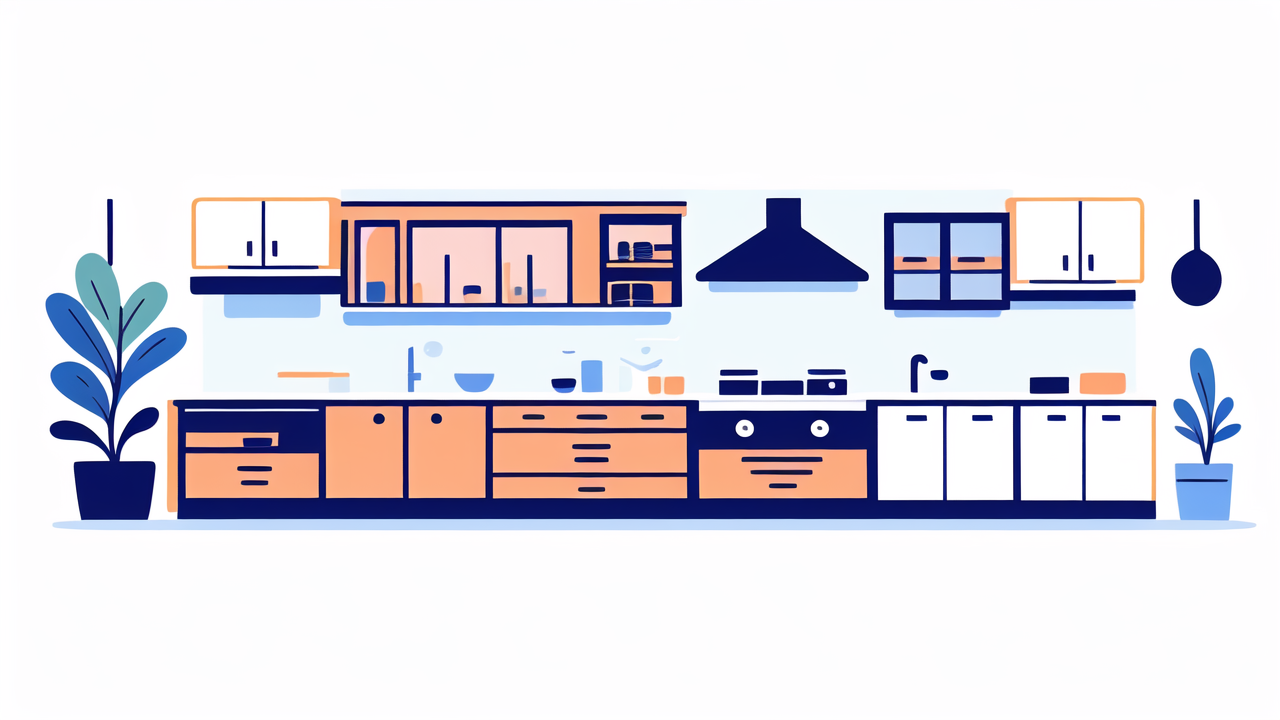The Rise of Smart Home Technology: Embrace Home Automation
Understanding the Basics of Home Automation
Home automation, often referred to as 'smart home technology,' is a system that automates household functions. It includes gadgets like smart thermostats and security cameras. These devices connect to a central hub or through Wi-Fi. They can be controlled remotely via smartphones or voice commands. This technology makes life easier, saving time and energy for homeowners. It boosts home security, comfort, and energy efficiency. As we dive deeper, you'll learn how it all works, the perks, and ways to start your smart home journey.

Key Benefits of a Smart Home System
- Convenience and Control: Easily manage home devices from your phone or voice command.
- Energy Efficiency: Smart systems optimize power use, saving money and the planet.
- Security Enhancement: Get real-time alerts and monitor your home remotely for peace of mind.
- Comfort and Customization: Set preferences for lighting, temperature, and more for your ideal environment.
- Increased Home Value: Upgrading to a smart home can boost your property's market worth.
- Remote Home Management: Check in on your home from anywhere, making travel worry-free.
How to Get Started with Home Automation
Getting started with home automation might seem daunting, but it's simpler than you think. Here's a step-by-step guide:
- Research: Learn about different systems and find what suits your needs.
- Start Small: Pick one aspect of your home to automate first, such as lighting or security.
- Choose a Hub: Invest in a central hub that supports various devices and standards.
- Smart Devices: Install smart devices that connect to the hub. Look for compatibility.
- Setup & Configure: Follow the manufacturer's instructions to set up each device.
- Automation Rules: Create rules and schedules for devices to work automatically.
- Expand Gradually: Once comfortable, add more smart features to other areas of your home.
In a short time, you'll enjoy the convenience and efficiency of a fully automated home.
Incorporating Lifestyle Trends into Your Home & Kitchen
Embracing Minimalism and Functionality
The minimalist trend has transformed the way we view our living spaces. It brings clarity, simplicity, and a sense of calm into the home & kitchen. By focusing on functionality, we reduce clutter and make room only for items that serve a purpose. Incorporating this trend involves several steps:
- Decluttering: Begin by removing items that you no longer use or need. This creates a more open, airy space.
- Quality Over Quantity: Invest in high-quality essentials that will last longer and perform better.
- Multi-Functional Furniture: Choose furniture that serves more than one purpose to maximize space usage.
- Neutral Color Palette: Stick to neutral colors for a timeless look that is easier on the eyes and matches with everything.
- Open Floor Plans: If possible, opt for an open floor plan that blends the kitchen with living areas for a more inclusive and flexible living space.
Embracing minimalism isn't just a design choice, it's a lifestyle that promotes a more relaxed and focused way of life. It shows that less can indeed be more.
Sustainable Living and Eco-Friendly Kitchen Practices
Incorporating sustainable living into your kitchen is more than a trend; it's a commitment to the health of our planet. Here are some eco-friendly practices to consider:
- Use reusable containers to cut down on single-use plastic.
- Invest in energy-efficient appliances to save on power and reduce carbon footprint.
- Choose sustainable materials for kitchenware and decor, such as bamboo or recycled glass.
- Compost organic waste to minimize landfill contributions and nourish your garden.
- Install a water filter to reduce the need for bottled water and to save on plastic waste.
- Grow your own herbs and vegetables, even in small spaces, to decrease reliance on store-bought produce.
By adopting these practices, not only do you create a more sustainable kitchen, but you also contribute to a healthier lifestyle and a better environment.
Bringing Wellness into Your Space: The Kitchen as a Focal Point
The kitchen, often the heart of the home, has taken on a new role as a wellness sanctuary. To align with this trend, many homeowners are redesigning their kitchens to foster health and happiness. Here are some ways to bring wellness into your kitchen space:
- Opt for Natural Materials: Use wood, stone, or bamboo to create a warm, organic environment.
- Herb Gardens: Incorporate small indoor gardens to grow fresh herbs, contributing to both nutrition and air quality.
- Ergonomic Designs: Choose furniture and tools that reduce strain and increase comfort during food preparation.
- Color Psychology: Utilize soothing color palettes that promote a calm and positive atmosphere.
- Purification Systems: Install water and air purifiers to ensure the purity and quality of your environment.
- Smart Kitchen Appliances: Utilize technology that helps in preparing healthy meals easily and efficiently.
By focusing on these elements, your kitchen can become a center of wellness, combining function with peace of mind.
The Future of Home Living: Innovations and Predictions
The Role of AI and Machine Learning in Home Automation
Artificial Intelligence (AI) and Machine Learning are transforming our homes. These techs make life easier. AI helps in managing home functions. It can learn our habits and act on them. Think about AI that heats your home before you arrive. Or, sensors that reduce energy use when no one is home. Smart fridges can also track food expiration. And, they may suggest recipes based on what you have. Machine Learning allows systems to improve with time. As they learn, they get better at predicting our needs. In short, AI and Machine Learning make home automation smarter. They give us more control and comfort every day.
Upcoming Trends in Home & Kitchen Design
The home and kitchen design world is always evolving, with new trends emerging every year. Here are a few that are making waves:
- Smart Kitchens: These kitchens integrate technology for efficiency and convenience. Think smart fridges that track your groceries.
- Open Spaces: The trend for open-plan living continues, encouraging a blend of kitchen and living areas for a more social space.
- Material Innovation: Eco-friendly materials are becoming popular for countertops and cabinets, like bamboo and recycled glass.
- Bold Colors: While minimalism favors a neutral palette, there’s a rising trend for pops of bold color to add personality to the space.
- Multifunctional Islands: Kitchen islands are being designed to serve multiple purposes, from dining areas to workspace.
- Indoor-Outdoor Flow: Design that connects the kitchen with outdoor spaces for entertaining and dining fresco is becoming desired.
These trends showcase a blend of aesthetics, sustainability, and practicality that are defining modern home living.
How Technology is Shaping the Way We Live
Technology is redefining our living spaces. It makes life more comfortable, efficient, and connected. Smart appliances learn our habits. They adjust to meet our needs. Voice commands control lights, music, and thermostats. Virtual assistants manage our schedules. They even help with shopping lists. Wearable devices track health and sync with home systems. Tech brings entertainment into every room. It also keeps us safe with advanced security systems. In short, technology turns houses into smart homes. It changes how we cook, clean, and relax.

